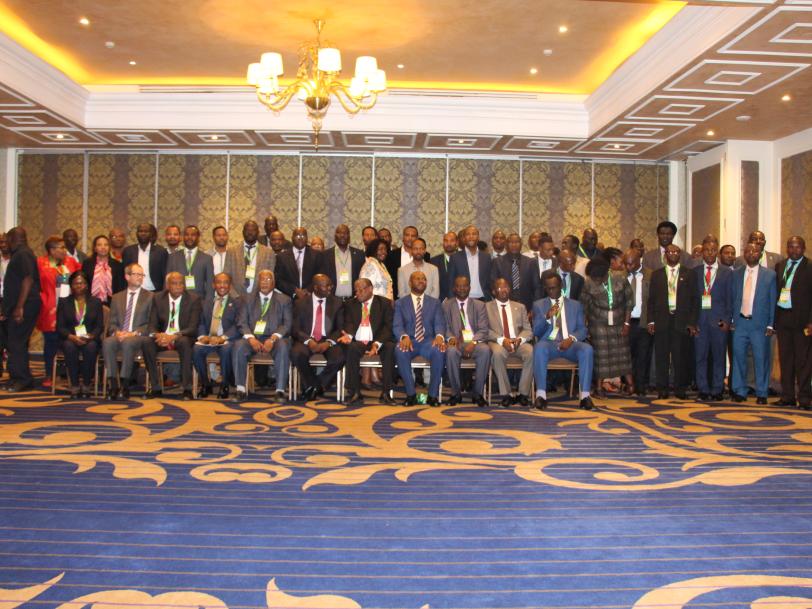
In order to ensure country driven multi-sector and basinwide approach to multipurpose infrastructure projects including fisheries production, irrigation development/ expansion, hydropower production, interconnection of power grids and watershed management planning and implementation in the Nile River basin, NBI/NELSAP is coordinating Nile Basin member countries to design, structure and package in-country and trans-boundary priority investment projects under the Nile Equatorial Lakes Investment Programme (NELIP).
NELIP will champion investments from studies already undertaken by NELSAP. The selected package of projects are those that will have the greatest benefit to the water, food, energy and environment sectors, improve rural livelihoods while having the least impact on the natural flow of the Nile River, including reducing sedimentation. NELIP recognises that all Nile Equatorial Lakes (NEL) riparian countries have investment plans that tap the potential of the River Nile to accelerate poverty alleviation and boost economic growth.
While hydropower generation and water supply will remain the main driver for the development of water infrastructure in the next decades, irrigation expansion is also planned in all of the countries to meet food security goals. Coordinated management of these investment will allow NEL member countries to reap the most from multi-country infrastructure systems, reduce political tensions, promote efficient use of common water resource and encourage regional cohesion.
Key indicators of NELIP success will be number of households connected to electricity supply, amount of food produced annually, amount of sediment loading in kilogrammes in waterways and water bodies, percentage of economic growth and number of rural communities living above the poverty line.
In 2012, NELSAP carried out a NEL Multi-Sector Investment Opportunity Analysis (MSIOA) which developed a regional water investment strategy for the Nile Equatorial Lakes (NEL) region that broadly supports socio-economic development, poverty reduction, and the reversal of environmental degradation.
Specifically, MSIOA (i) identified potential regional investment options, taking into account their economic, social and environmental implications as well as cumulative impacts; (ii) investigated the alignment of potential regional investment options with national-level priorities and plans; (iii) prioritised and sequenced potential investments in light of existing and planned interventions (including those supported by development partners) up to 2035; and (iv) contributed to the regional knowledge base.
In implementing the recommendations from the MSIOA study, in 2013, NELSAP, together with the World Bank CIWA Trust Fund, formulated the Nile Cooperation for Results (NCORE) Project with the overall objective to “facilitate cooperative water resources management and development in the Nile Basin”.
Under the NCORE project, NELSAP implemented, among other activities, the preparation of transformative investment projects of regional significance of the Sio-Sango irrigation and water resources development project in Kenya, Kabuyanda irrigation and water resources development project in Uganda, Mara Valley irrigation and water resources development project in Tanzania and Ngono Valley irrigation and water resources development project in Tanzania.
Other investment projects implemented by NELSAP include the Multinational Lakes Edward and Albert Integrated Fisheries and Water Resources Management Project (LEAF II Project) shared between the DR Congo and Uganda and funded by the African Development Bank (AfDB) and the Global Environment Facility (GEF); the AfDB African Water Facility (AWF) funded Nyimur irrigation and water resources development project in Uganda.
Others are the Regional Rusumo Falls Hydroelectric project funded by the World Bank for the power plant and AfDB for overhead lines (by the countries-Burundi, Rwanda and Tanzania); Uganda – DR Congo (DRC) Interconnection project; Tanzania - Zambia Interconnection project; the Interconnection of the Electric Grids of the Nile Equatorial Lakes Countries: Burundi, DR Congo, Kenya, Rwanda and Uganda.
Additionally, there is NBI/NELSAP Technical Assistance for Capacity Building for River Basin Planning funded by the French Development Agency (AFD); Electric Interconnection of the Electric Grids of the NEL member countries project funded by Sida, KfW (Government of Germany), JICA Government of The Netherlands and EU; ZambiaTanzania-Kenya Interconnector Study project funded by KfW and Government of Norway.
Comprehensive Basin Wide study of Power Options; Basin Irrigation Potential Assessment (RATP project) by CIDA; and the NBI-NELSAP/Implementation of wetlands management plans in the NEL Region Project funded by the German Government / Ministry of Environment - International Climate Initiative (BMUB-ICI) and implemented by The Deutsche Gesellschaft für Internationale Zusammenarbeit GmbH (GIZ).
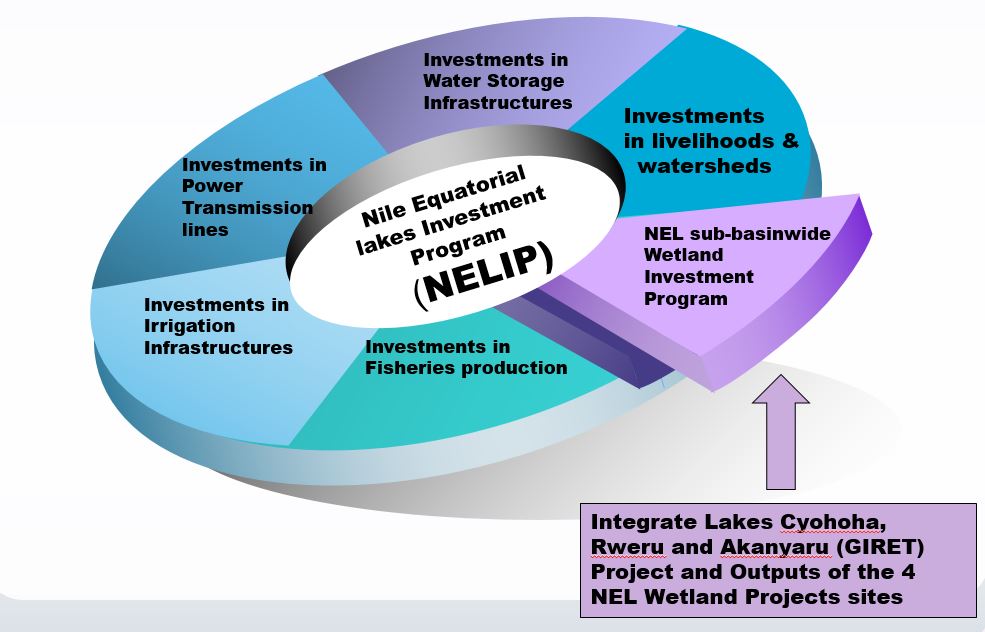
Coordinated development and management of the water energy and food resources in the Nile Basin will be the most critical challenge of the coming decade, requiring careful balance of economic and environmental interests and better management of natural resources.
NELSAP has developed internal capacity on assessments of the state of NEL region’s resource endowments in order to build Member Countries capacity as well as provide Member States with a shared knowledge base and an interactive information system that facilitates decision making and supports informed planning and management of the shared water resources.
The establishment of a NEL basin-wide Investment Programme (NELIP), therefore is key in advancing major studies and implementing investment projects that have impacts on improving the integrities of the basin water and land resources, improving livelihoods of the basin population, contributing to economic growth and reversing environmental degradation.
Under NELIP Member Countries will structure a basinwide investment programme that has buy-in from the sector ministries of finance, planning, water, irrigation, energy, natural resources, health, and trade among others.
The Programme will also find ways of collaborating with other regional organisations (EAC, LVBC, IGAD, ICPAC, RCMRD, COMEMSA, SAPs and EAPP) including the private sector during the planning and implementation of its activities.
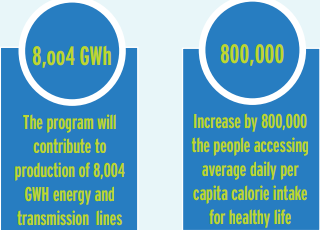
The overall goal of the NELIIP is “to optimise and implement a NEL basin water, energy and food security program to boost NEL member countries’ economic growths, improve rural livelihoods as well as reduce poverty levels and safeguard the Nile River ecosystems”.
Specifically, the NELIP will: (a) build on ongoing work in the NBI/NEL region, of the Lake Victoria Basin Commission (LVBC) of national programs and plans; (b) implement in-country/transboundary multipurpose infrastructure projects for fisheries production, irrigation development/expansion, interconnection power lines and watershed management; (c) implement rural livelihoods improvement projects such as agricultural products value addition, eco-tourism and market access; and (d) develop a basinwide framework and tools to map and monitor cumulative impacts of the implemented investments on the basin water and land resources.
Expected NELIP Results:
The expected results from this NELIP project include: (a) enhanced food and energy security in the Nile Basin; (b) increased water quantities and improved water quality in the basin waterways and reservoirs/lakes; (c) improved livelihoods to the Basin population; (d) increased cooperation between NEL Member Countries; and (e) improved coordination between NBI institutions, NEL Member Countries sector ministries and other regional organisations working within the Nile Basin.
Other key specific results are; Contribute to production of energy of about 8,004.17GWh and transmission lines; Contribute to food security in the region by increasing about 0.8 million people accessing an average daily per capita calorie intake for healthy life and improved livelihood.
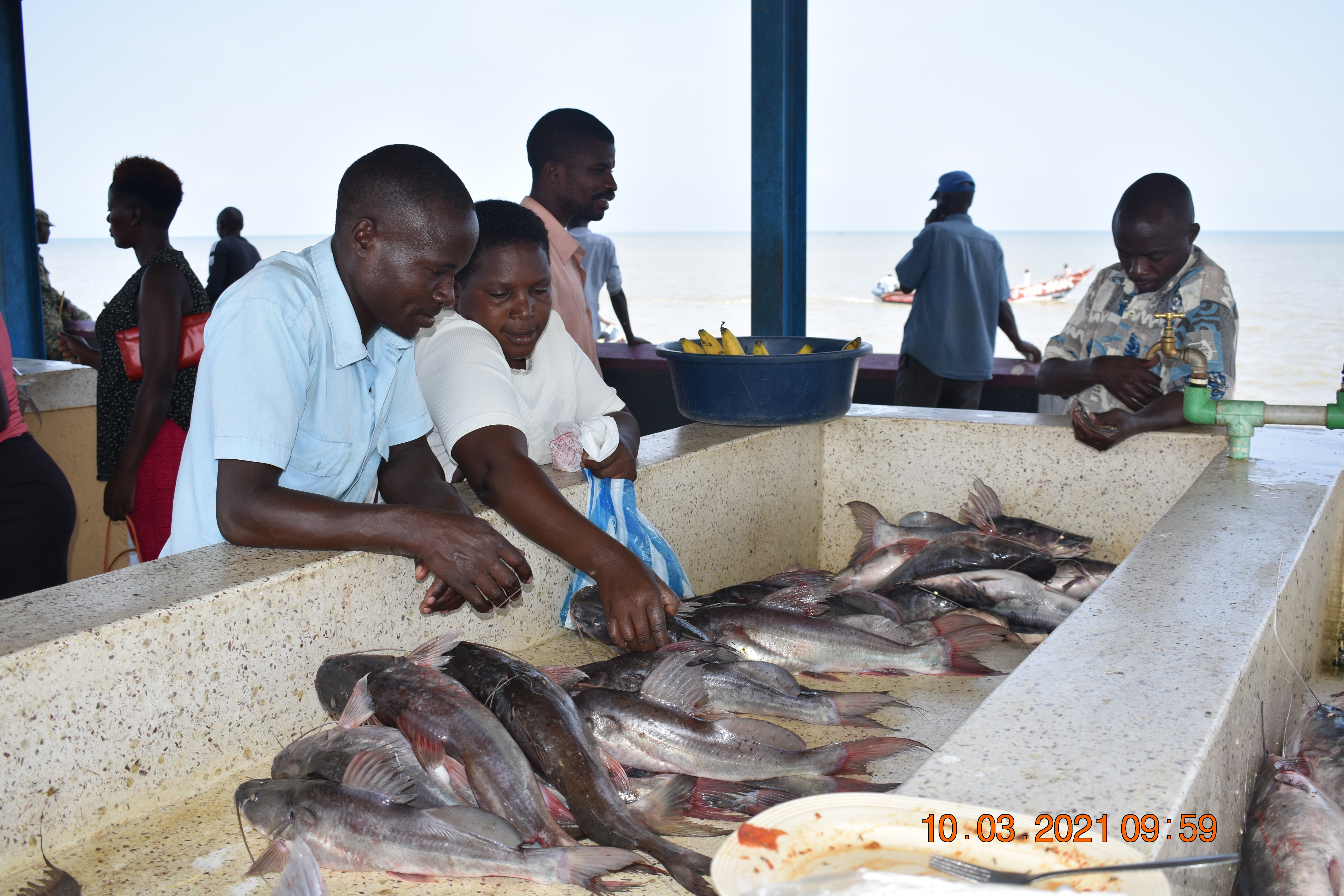
The design and structure of NELIP will be done jointly with the NEL Member Countries by involving the sector Ministries of Finance, Planning, Water, Irrigation, Energy, Natural Resources, Health, and Trade among others. During its design, there will be intensive collaboration with other regional organisations like EAC, LVBC, IGAD, ICPAC, RCMRD, COMEMSA, SAPs and EAPP.
The private sector will also be involved during the planning and implementation of NELIP activities. Regional Stakeholders consultations: Two regional stakeholder workshops have been held to design, structure, review and discuss the proposed NELIP.
In the 1st regional stakeholder workshop, the overall NELIP goal, its objectives and prioritised transboundary investment projects in the water-energy-food nexus were agreed upon. During the 2nd regional stakeholder workshop, the NELIP proposal was validated. At the third regional stakeholder workshop in May 2020, there was approval of the programme by the NBI/NELSAP governance (NELCOM) and Ministers of Finance.
Designing and structuring of NELIP:
Consultants were hired to carry out rapid assessment of the NEL member countries' needs; review member countries' investment sector plans; identify and include prioritised investment projects into the NELIP proposal; carry out institutional analyses for capacity building and training; formulate proposed NELIP investment plan; develop scope of work and cost estimates for the NELIP; prepare the NELIP financing plan; prepare the NELIP implementation plan; design the NELIP monitoring and evaluation framework; evaluate the sustainability and risks of the NELIP; and carry out a financial and economic evaluation of NELIP.
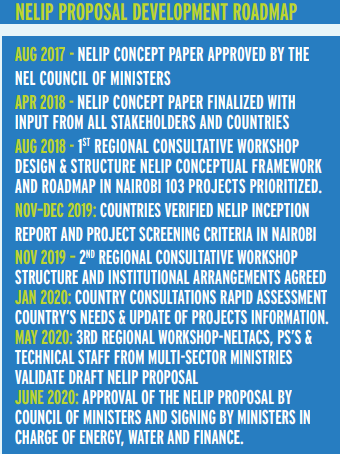
The implementation structure and institutional arrangements of NELIP was agreed upon by the member countries during the 2nd regional consultative workshop. Creteria selected to analyse the agreed scenerios were also agreed upon.
These scenerios are; Maximise employment created from hydropower and irrigation projects; Maximise total number of beneficiaries; Maximise total revenue collected from irrigation and hydropower projects; Minimise percentage of change of inflows to Sudd wetlands and Albert Nile; Minimise percentage of change of inflows to Mara and Minziro Wetlands; Maximise energy security (Produced energy); Maximise food security (number of people feed by crop calories); Minimise total implementation cost.
Technical Analysis of NELIP Projects:
The Nile Basin Decision Support System (NB DSS) was used to complete the technical analysis of the NELIP priority projects using MCA tool. Re-calibration of the NEL Model with all sub-catchments and planned NELIP projects up to Bahr el Jebel in South Sudan was also done.
